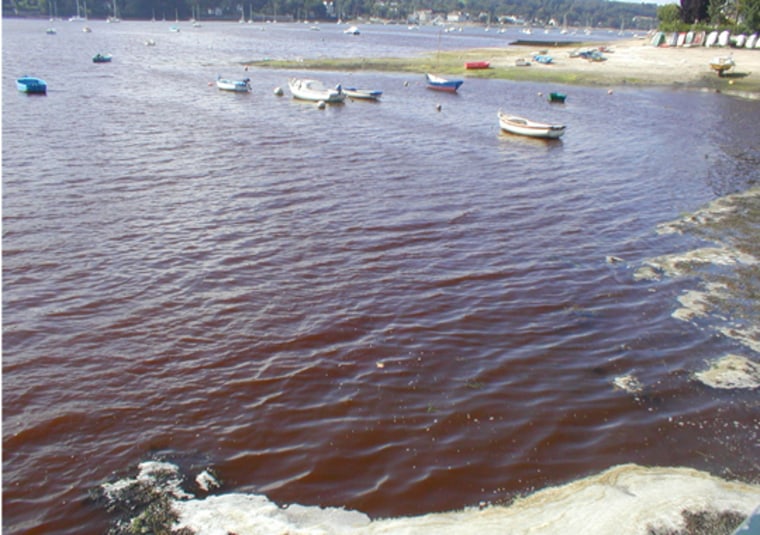For the first time ever, marine biologists have tracked the control of red tides to a virulent parasite with a gruesome lifestyle not entirely unlike those in the movie "Aliens." It's powerful new evidence that toxic red tides seen in coastal waters can be controlled by more than just other microscopic beasties eating them.
"If these observations can be extended to other ecosystems, then red tides will be less unpredictable, at least we will understand better their natural regulations," said researcher Laure Guillou of the Universite Pierre et Marie Curie in Paris. Guillou is a coauthor of a paper on the discovery in the Nov. 21 issue of Science.
Using a new technique that allows researchers to track the parasites as they infect the plankton with fluorescent markers, Guillou and her colleagues were able to monitor both an invasive species of plankton and the parasites for three years in a coastal estuary in France. What they were able to see was the very early infection of the plankton by the parasite, and then the eventual swelling and bursting of the plankton as the parasite's many offspring broke free — hungry to infect again.
"We hypothesize that when a bloom occurs, these parasitoids are not able to infect the invasive species," Guillou said.
But that hasn't happened in 10 years, perhaps because the parasites have caught up with their host, settled in and now do a pretty good job keeping the plankton from overpopulating.
In this light, then, some red tides may be the result of species of plankton being introduced to new places where their parasites are a lot less numerous. Once the parasite gets established, the harmful blooms stop.
"It's opening up whole new ways of thinking," said red tide researcher Xavier Mayali of the Scripps Institution of Oceanography at the University of California, San Diego.
Previously scientists had observed in the laboratory that the parasites infected and killed plankton. But the degree to which plankton could be infected in the real world was not at all well understood, Mayali explained.
The discovery adds yet another to a slowly growing list of things that can control toxic tides, Mayali told Discovery News. In the 1980s it was thought that small plankton-eating organisms were the primary control on plankton blooms. Then, in the 1990s, it was discovered that other single-celled organisms were also preying on plankton.
Now it's clear the parasites play a big role too.
